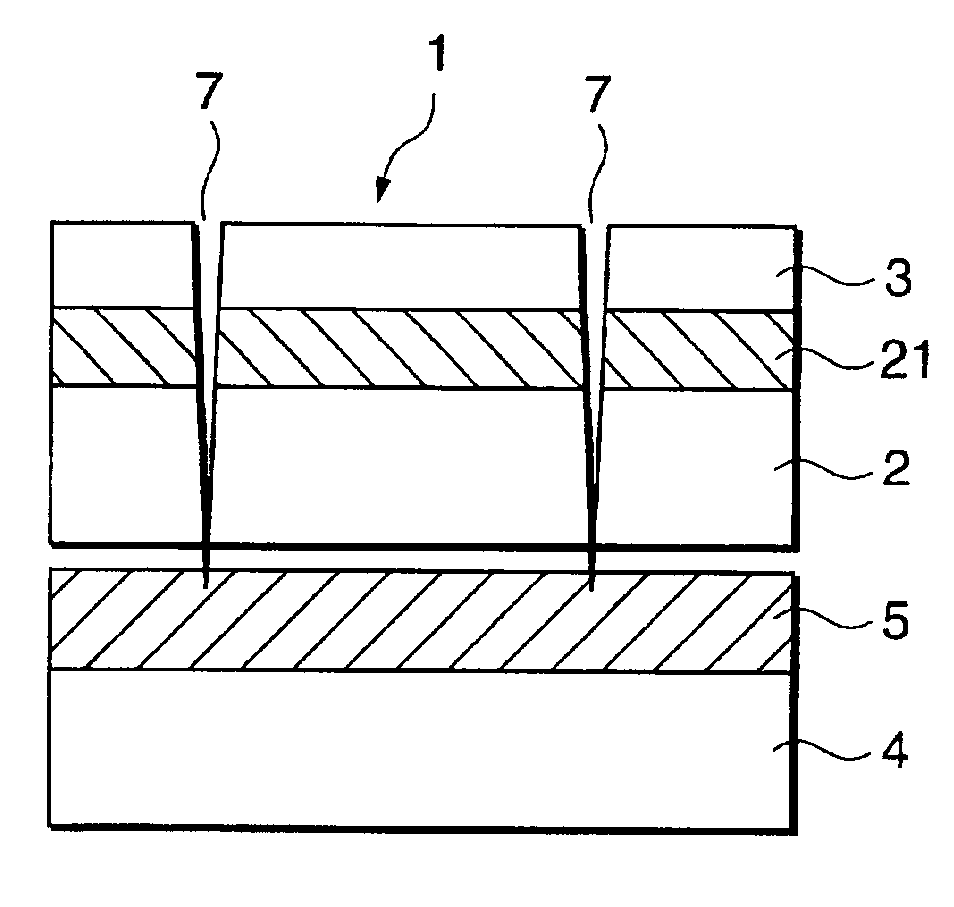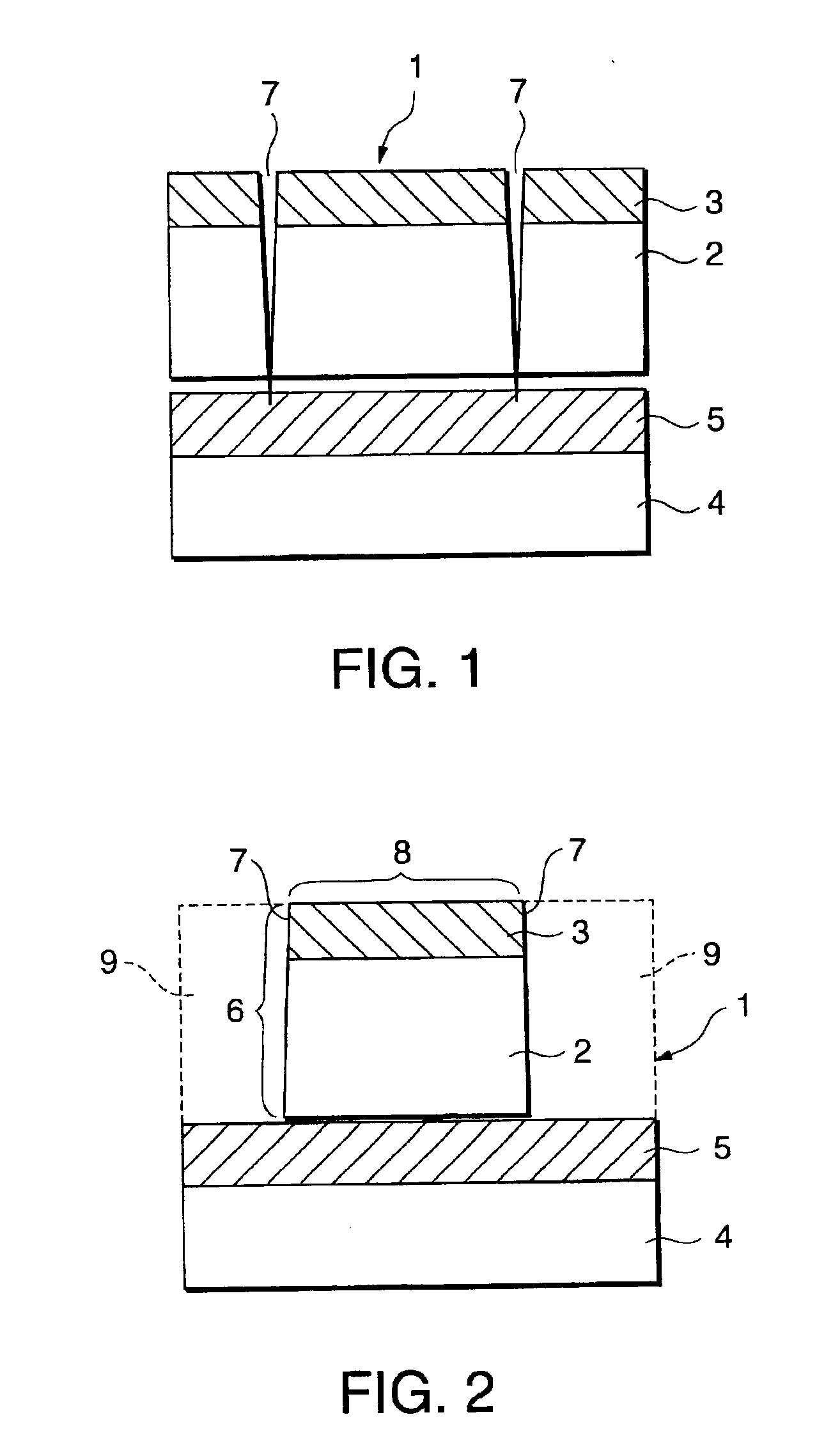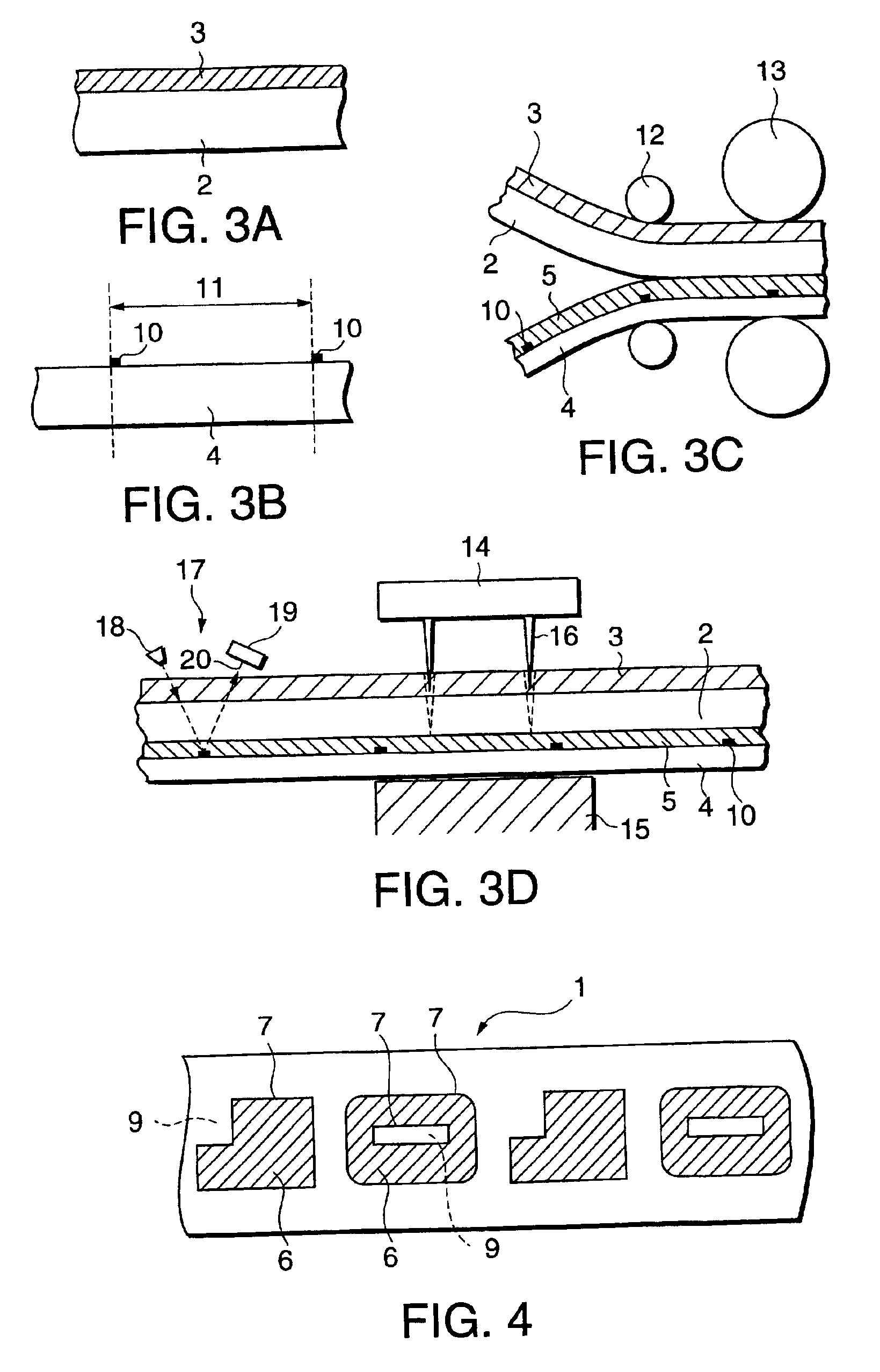Intermediate transfer recording medium and method for image formation using the same
a technology of image formation and recording medium, which is applied in the direction of identification means, photosensitive materials, instruments, etc., can solve the problems of deteriorating image quality and increasing opaqueness, and achieves simple transfer, excellent fastness properties, and high accuracy
- Summary
- Abstract
- Description
- Claims
- Application Information
AI Technical Summary
Benefits of technology
Problems solved by technology
Method used
Image
Examples
example 1
The following coating liquid for a receptive layer was first coated on a 25 μm-thick polyethylene terephthalate film (Lumirror, manufactured by Toray Industries, Inc.) as a transparent sheet, and the coating was dried to form a receptive layer at a coverage of 3.0 g / m2 on a dry basis.
Coating liquid for receptive layerVinyl chloride-vinyl acetate copolymer40 partsAcrylic silicone1.5 parts Methyl ethyl ketone50 partsToluene50 parts
Next, a 38 μm-thick polyethylene terephthalate film (Lumirror, manufactured by Toray Industries, Inc.) was provided as a sheet substrate. Register marks were formed on the sheet substrate at its positions as shown in FIG. 3B by gravure printing a register mark ink having the following composition at a coverage of 3 g / m2 on a dry basis.
Register mark inkCarbon black 8.0 partsUrethane resin (HMS-20, manufactured 5.0 partsby Nippon Polyurethane Industry Co., Ltd.)Methyl ethyl ketone38.5 partsToluene38.5 parts
The transparent sheet provided with the receptive laye...
example 2
A receptive layer was provided on a transparent sheet in the same manner as in Example 1. Separately, a 38 μm-thick polyethylene terephthalate film (Lumirror, manufactured by Toray Industries, Inc.) was provided as a sheet substrate. A resin of low density polyethylene (LDPE) with 15% of titanium oxide being dispersed therein was extrusion coated on the sheet substrate to a thickness of 40 μm. Simultaneously with the extrusion, the transparent sheet with the receptive layer formed thereon was EC laminated onto the sheet substrate with the resin layer formed thereon so that the transparent sheet on its side remote from the receptive layer faced the LDPE layer provided on the sheet substrate. In this case, however, as shown in FIG. 3C, register marks were previously printed by register mark ink as used in Example 1 in the same manner as in Example 1 on the sheet substrate in its side where the LDPE layer was to be formed.
Further, in the laminate thus obtained, as shown in FIG. 3D, the...
example 3
The following coating liquid for an ultraviolet absorbing resin layer was coated on a 25 μm-thick polyethylene terephthalate film (Lumirror, manufactured by Toray Industries, Inc.) as a transparent sheet, and the coating was dried to form an ultraviolet absorbing resin layer at a coverage of 1.0 g / m2 on a dry basis.
Coating liquid for ultraviolet absorbing resin layerCopolymer resin with reactive ultraviolet20 partsabsorbing agent chemically bonded thereto(UVA-633 L, manufactured by BASFJapan Ltd.)Methyl ethyl ketone / toluene80 parts(weight ratio = 1 / 1)
Further, the same coating liquid for a receptive layer as used in Example 1 was coated onto the ultraviolet absorbing resin layer, and the coating was then dried to form a receptive layer at a coverage of 3.0 g / m2 on a dry basis.
Next, the same sheet substrate as used in Example 1 was provided. Register marks were formed on the sheet substrate at its positions as shown in FIG. 7B by gravure printing the same register mark ink as used in ...
PUM
| Property | Measurement | Unit |
|---|---|---|
| Surface energy | aaaaa | aaaaa |
| Fraction | aaaaa | aaaaa |
| Fraction | aaaaa | aaaaa |
Abstract
Description
Claims
Application Information
 Login to View More
Login to View More - R&D
- Intellectual Property
- Life Sciences
- Materials
- Tech Scout
- Unparalleled Data Quality
- Higher Quality Content
- 60% Fewer Hallucinations
Browse by: Latest US Patents, China's latest patents, Technical Efficacy Thesaurus, Application Domain, Technology Topic, Popular Technical Reports.
© 2025 PatSnap. All rights reserved.Legal|Privacy policy|Modern Slavery Act Transparency Statement|Sitemap|About US| Contact US: help@patsnap.com



